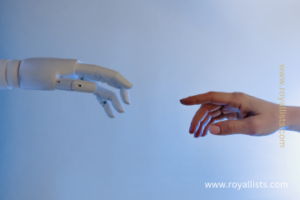Over the last few years, generative AI has advanced far enough to start changing a variety of facets within creative industries. AI Oh My: From art and music to film, writing these are the AI techs that allow new forms of creativity- And efficiency – The UK News Helper However, by 2024 generative AI really begins to get into full gear and significantly changes the work process for creatives e.g., professional researchers who can not only create but generate a high quality of content.
Generative AI Grows Up in the Creative Fields

In terms of generating new content like text, images and music faster akin to GPT or DALL-E for AI writers. This technology moved to the front burner and went mainstream with tools like ChatGPT, Midjourney which were made readily available and it did good enough in demonstrating that AI can perform creative tasks.
Transforming Art and Design
To say that AI has revolutionized arts and designs would not be wrong since generative AI has expanded the horizons in this field. The good thing is that artists can now incorporate AI in such areas has making new visuals, getting rid of monotonous work and trying new things. For instance, application like Canva or Adobe Sensei help to build attractive graphics or to edit images with the help of the artificial intelligence. This means that artists can devote most of their time towards the artistic work and AI covers other technical part .
Further, Deep Dream Generator and CLO 3D facilitate designers to design bizarre images and real life like thumbnail images in 3D respectively. These technologies make it easier and precise for the designers to materialize their ideas and concepts.
Revolutionizing Music Composition
Thus, generative AI is already a rather valuable tool in the musical indutry for all members of a musical team, starting with a composer and ending with a producer. The computer programs of creating music include AIVA and MuseNet; these technologies can help musicians discover new styles and new musical creations. They are considered to be the assistants which are avaliable 24/7 and help in creative process.
Virtual performances can also be produced with generative AI in order to adapt suitable music for interactive media like video games, VR environments, and more. Some tools such as Melodrive create music scores or soundtracks that are synthesized based on the users’ input, thus increasing the engagement factor.
Enhancing Film and Animation
The film & animation industries are also beneficiaries of generative AI. Runway ML and NVIDIA GauGAN support filmmakers to generate and optimize videos and CGI plus characters’ expressions. These tools make the pigeonholing easier and let creators to work on the stories while the AI is handling narrow tasks.
AI generative effects can work on how scenes appear for a viewer, what changes should be made, and how audiences will respond, which informs directors’ decisions. This technology does not only help the speed up the process of making films but also stimulate the imagination.
Transtioning Writing and Content Creation
Generative AI has completely transformed the way writing and content generation is done. Tools such as ChatGPT and WriteSonic are capable of creating good blog posts, social media posts and marketing wordsmith. These tools automatically generate the required text having good readability and pertinency, which helps the writers and marketers to save their time.
Also, research writers who apply AI in their work use various tools like Claude AI to come up with ideas, write drafts, and carry out research. This increases the rate of writing and also enables the creators to spend time on the development of quality content.
Ethical Considerations and Challenges
Thus, the application of generative AI has numerous advantages; however, it is also accompanied by several disadvantages and ethical dilemmas. Roadblocks like data security, piracy rights, and possible prejudice in the results need to be solved. The creative industries need to tread this balance to realize that AI can only be good if it used appropriately and rightly so.
In addition to the FOBO, the fear of becoming obsolete, is a considerable issue affecting creative workers. Lots of people fear that AI might take over people’s careers especially in the arts & creative professions. However, studies indicate that while AI is set to disrupt the labor market complicatedly, it will mainly lead to human creativity jobs being supplemented or new human creativity jobs being formed in total.
Generative AI Technology and its trends in Creative Sector
That is why, as the technology of generative AI advances, the effect that it will have on creative industries will be even greater. It will result in better targeting audiences and developing novelty concepts; it will also increase efficiency in production. Of course, it is necessary to introduce ethical norms and make sure that AI can become not the replacement for creativity, but the tool that improves it.
Conclusion:
So, it is safe to conclude that generative AI is really revolutionalizing creative industries in a rather spectacular way. In this realm, art and design to music, film, writing, and so much more are being enhanced, made efficient by AI. The future is in the AI and as we advance there is need to note the usefulness of AI against the ills as to promote balance and the integration of these creations into our world.

